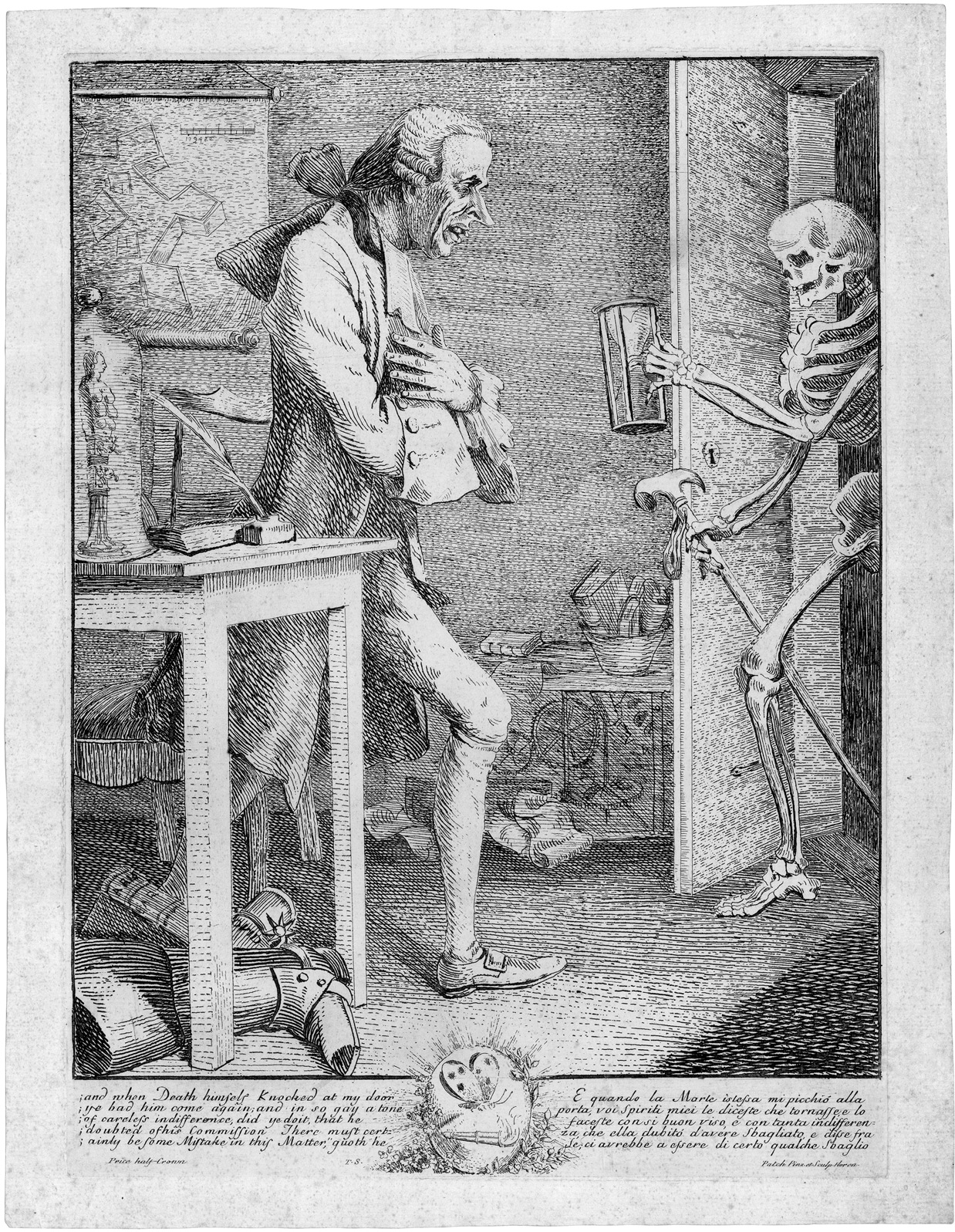Loading the page ...
Thomas Patch
(ca. 1720 Devonshire – 1782 Florence)
And when Death himself knocked at my door … Etching. 41.6 x 30.6 cm. Not in Nagler or Le Blanc.
The English painter and engraver Thomas Patch was a friend of Joshua Reynolds, whom he accompanied to Italy in 1747. Patch settled first in Rome, where his landscape capriccios were especially popular with British travellers doing the Grand Tour. In 1755 he moved to Florence, where he continued to reside until his death, earning his living by painting vedute and genre pieces. He also showed a considerable interest in the history of art, as is illustrated by his engraved reproductions of the works of the main Florentine masters of the 14th and 15th centuries, such as Giotto, Ghiberti, Masaccio and Fra Bartolomeo. In so doing, Patch was one of the first to draw attention to the work of these artists at a remarkably early stage.
The present work, which according to the inscription reproduces a painting by the artist, is missing from the lists of Nagler and Le Blanc and is probably very rare. Death bearing a walking stick and an hourglass enters the rather untidy studiolo of an antiquarian or scholar. Patch has conjured up a scene of creative chaos that reveals an unerring eye for humorous detail. In the foreground, behind a carelessly discarded boot, we can make out volumes by Aristotle and Ovid, while letters and scraps of paper lie strewn about the floor. An ancient statue of Diana of Ephesus under a glass bell, the inkpot and pen on the table, and the plan of a fortification system on the wall testify to the erudition of the man in the center of the composition, who is bowing politely to Death and using all his eloquence to convince him that his mission is unnecessary. The English text below – which is also given in Italian – reads: “And when Death himself knocked at my door, ye had him come again, and in so gay a tone of careless indifference did ye do it, that he doubted of his Commission. There must certainly be some Mistake in this Matter, quoth he.” The little emblem at the bottom showing a butterfly fluttering round a flaming torch is a humorous symbol of the precarious nature of life in general. The subject is rendered with a light and deft touch that respires the spontaneity of a pen-and-ink sketch.
A superb impression printed with burr and with margins around the distinctive platemark. Slight aging, otherwise in excellent condition.
